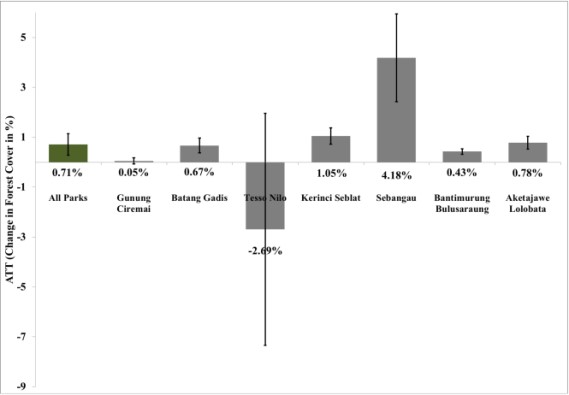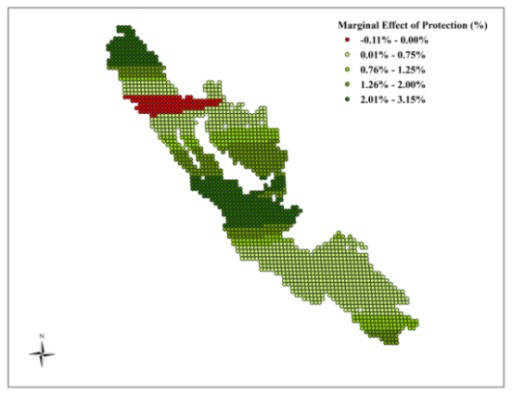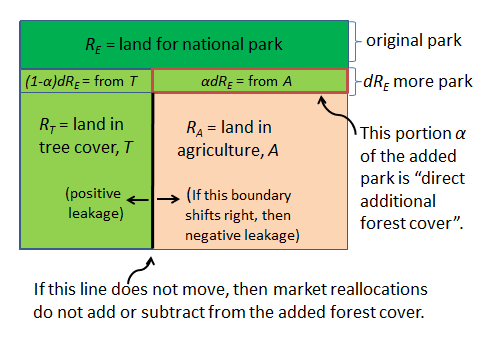Annual Report FY2014: Payal Shah
Payal Shah
Science and Technology Associate
1 Introduction
My research focuses on evaluating the social and environmental consequences of natural resource management using economic theory and formulating optimal strategies to address problems posed by environmental challenges such as climate change.
2 Activities and Findings
Evaluating the effectiveness of protected areas in Indonesia
We use statistical methods to evaluate the effectiveness of Indonesian protected areas using remote sensing data and explore how the effectiveness of these parks varies over space. The effective change in primary forest cover ranges from a decrease of 2.7% to an increase of 4.2% (as seen in Figure a). Our statistical methods enable us to understand how the effect of protection also varies within a single protected area (as seen in Figure 1(b) for Kerinci Seblat National Park)


(a) (b)
Figure 1
Economic drivers of changes in deforestation near protected areas
Setting aside land for protection can lead to an increase in forest cover (“negative leakage”) or a decrease in forest cover (“positive leakage”) on private land outside the protected area. We developed an analytical general equilibrium model to solve for leakage as a function of key economic variables. As seen in the figure on the left, after setting aside new land for protection, there are changes in land use patterns on remaining private land. We then use comparative statics to evaluate the effect of these economic variables on leakage. The results are empirically tested for Indonesia based on Landsat data from 2000 and 2010.

Optimal conservation planning and climate change uncertainty
Climate-change driven uncertainty poses problems for conservation planning and natural resource management. Previous work develops a variance minimizing portfolio diversification model that can reduce overall expected uncertainty of achieving target environmental outcomes (e.g. strategy A and B on the solid line in Figure 3(a)). As seen in Figure 3(b), conservation strategy B is associated with two different distributions, PB1 and PB2. However, the variance minimizing model does not distinguish between these distributions and ranks both PB1 and PB2 as equal. We develop a new approach to manage downside uncertainty in future natural resource management outcomes that will discern between PB1 and PB2.

3 Collaborations
4 Publications and other output
Shah, P. and Baylis, K. Evaluating heterogeneous conservation effects of forest protection in Indonesia. Accepted in PLOS One.
Shah, P. and Ando, A. W. Downside vs. symmetric measures of uncertainty in natural resource portfolio design to manage climate-change uncertainty. Accepted in Land Economics.
4.1 Oral presentations
Shah, P. and Ando, A. W. Downside vs symmetric risk in conservation portfolio design to manage climate change uncertainty, World Congress of Environmental and Resource Economists, Istanbul, Turkey (June 2014).
Baylis, K., Fullerton, D. and Shah, P. What drives forest leakage? Allied Social Sciences Association Annual Meeting 2015, Boston, USA (January 2015).
Mieno, T., Tanaka, K. and Shah, P. Optimal timing of irreversible land use conversion under uncertainty: An experimental approach, Midwest Economics Association Annual Meeting, Illinois, USA (March 2015).



